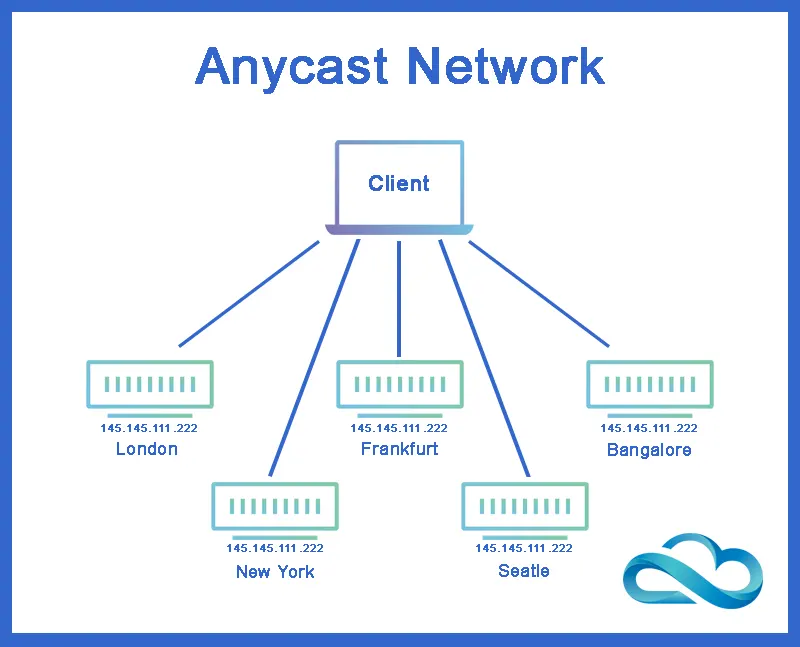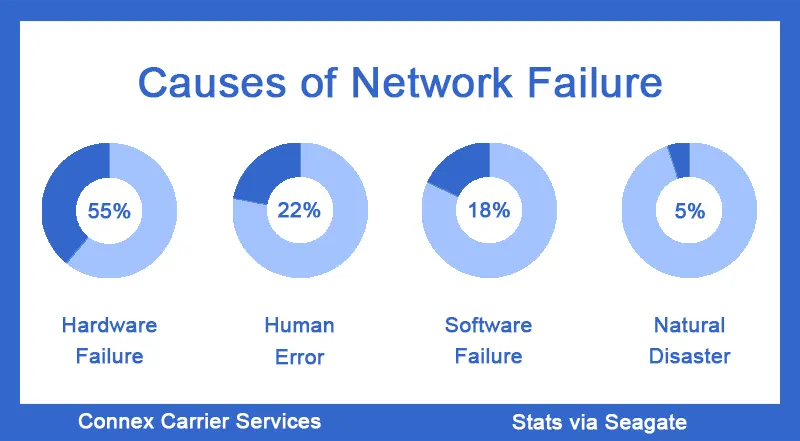Understanding VoIP Anycast Load Balancing
Servers sit at the core of VoIP’s switching and media transfer function. Monitoring and managing these servers efficiently is necessary for any VoIP service provider.
While servers run like clockwork at most times, they run into hurdles now and then. This could affect your ability to provide a seamless customer experience.
A sudden surge of traffic, traffic mismanagement, DoS or DDoS attack, etc. can be among the multiple reasons for a server to be overloaded.
An overloaded server loses the ability to operate at its peak performance and in extreme circumstances may even shut down.
Avoiding such incidents is a top priority for any VoIP service provider. This can easily be achieved with the help of an AnyCast Load Balancer.
Let us clear the basics before we get on with our main topic!
What is Load Balancing?
Load balancing is the process of distributing workload properly among the cloud-based VoIP servers and carefully managing the traffic to ensure maximum server availability and performance.
Load balancing allows VoIP service providers to efficiently route traffic to multiple servers while minimizing server load and ensuring minimal disruptions in service.
A load balancer monitors server capacity and incoming traffic in real-time. When the incoming traffic to a particular server increases, the load balancer will divert a portion of this traffic to another server to not overwhelm the initial server.

Load balancing ensures the entire network functions at an optimal level and no server is overburdened with workload which may lead to a system failure.
A service provider can drastically reduce operational costs and minimize server downtime and maintenance.
Load balancers can be a single point of failure for the network, so they can be deployed with active and standby. However this does not tollerate datacenter or provider failures too well, so we have to do something even better if we want more uptime
Let us learn more about these!
What is Anycast?
Anycast is a network addressing and routing methodology that allows servers based in multiple locations to share a single IP address. The traffic is routed to the nearest server available.
Anycast as a routing method has two benefits:
- Network traffic can be distributed between more than 1 entry point.
- Network traffic can easily be rerouted to the next nearest server in case of server overload or failure.
Anycast’s selective routing allows the network to deal with sudden traffic surges, local network failures, network congestion, DoS or DDoS attacks, etc.

Sounds promising, doesn’t it? That raises the question, how does it manage all of this?
Let me answer that!
How does Anycast Load Balancing Work?
To explain this networking methodology in the best way possible, we’re going to consider scenarios where this system shines.
A Sudden Surge in Traffic
There could be multiple reasons why VoIP traffic might surge in a zone suddenly. The holiday season, midnight on New Year’s Eve, meeting hours, etc.
In such instances, having anycast deployed helps. The traffic surge can be distributed to other servers outside of that operational zones easily.
While this might lead to an increase in latency, the increase is minuscule enough that the end users would not notice it.
Thus, we can use Anycast to balance out the traffic load and ensure all servers function optimally and have high availability.
Network Failure or Outage in a Particular Zone
There have been many instances where the entire network of a zone has gone down or suffered a significant failure.
There could be multiple reasons behind this. Government intervention, power grid failure, networking hardware failure, DoS attack, etc. to name a few.

When a server or multiple servers designated for that zone go down, anycast can stop advertising itself to be available and traffic from that zone can be routed to the next nearest available servers.
Similar to the previous scenario, there will be an increase in latency. However, the service will remain operational despite the servers in that zone being down.
DoS or DDoS Attack
DoS or DDoS attacks generate and route huge amounts of malicious traffic to single or multiple servers. This is done to overload the servers to a point they’re overrun and go down.
When you have an anycast load balancer deployed, the scenario changes. An anycast load balancer that is intelligent can easily detect a DoS or DDoS attack.
When it does detect such an attack it routes the malicious traffic to all available servers in a bet to absorb the attack completely.
If the attack is so large that we can’t vacuum up the traffic, we can blackhole a portion of the internet where the attack is originating nullifying the attack and remain available for legitimate traffic.
By now you understand how Anycast Load Balancing works with these examples. Let us now consider all the internal failure factors that can affect your VoIP service.
5 Common Server Failure Scenarios
Server failures are inevitable. You can take measures to mitigate the possibility but no measure eliminates the chances of a failure.
Before we get to the fix, let us learn about the 5 most common server failure scenarios!
Process Crash
A core process such as DNS, proxy, cache or logging can crash at times. When such a process crash occurs the monitor daemon detects the failure.
As a corrective action, it signals the BIRD to withdraw the BGP routes to the failed process. The traffic is diverted to the next server with the lowest load.
After the routes have been withdrawn, the monitor daemon restarts the server again. It runs checks on the server to ensure it has come up clean.
Once it has been established that the affected server is up and running properly, the daemon signals it to start announcing the routes again.
Server Crash
An entire server crashing is a common occurrence. There are many reasons why a server may crash and when it does the BIRD crashes along with it.
The routers take note of this and route all the BGP routes from that server to the next lowest load server.
The control server within the data centre will attempt to restart the affected server using the IPMI interface. If that fails, the control server puts the server through a power cycle from the PDU.
Once the control server verifies that the affected server is up and running, it restarts the BIRD and reinitiates all the routes to it.
Switch Crash
When a switch fails due to one of the many reasons that might affect it, all routes to the servers behind that switch are withdrawn.
The traffic corresponding to the IPs of those failed servers is routed to the closest data centre. The team maintaining the networks is notified about the switch failure.
The team then attempts to fix the router by either rebooting it or replacing it in case of a hardware failure.
Router Crash
A router crash is similar to a switch crash. Once a router fails, all routes leading to the switches and servers behind it are withdrawn.
The traffic from the data centre affected by the router crash is diverted to the closest low-load data centre.
The network team is notified by internal and external monitors about the router crash. Similar to a switch crash, the team may resort to rebooting the router or replacing it in case of a hardware failure.
Regional Nuclear Conflict
Okay. I know this isn’t a common occurrence around the world but it is always good to be prepared for something like this.
People working in the networking departments of important facilities know how important it is to prepare for such a scenario.
Given the current geopolitical situation, a limited regional nuclear exchange is a possibility. In such a scenario, a data centre in the affected area will be rendered completely unfunctional due to the electromagnetic and radioactive fallout.
When this happens, any traffic handled by that data centre will be routed to the nearest data centre out of the affected zone.
With that, we have covered everything you need to learn about VoIP load balancing.
Conclusion
Like every machine out there, servers, software and hardware running those are bound to fail at one point or another.
While one can add hardware measures and additional server capacity to tackle such issues, those too become singular points of failure.
Anycast load balancing mitigates these risks as it is a routing methodology. It does not require any hardware for implementation and thus eliminates any singular failure points.
When implemented, anycast load balancing can keep your network up and customers happy at all times!
ConnexCS has a perfect AnyCast Load Balancing solution for VoIP Carriers. Click here to know more!
























































































































